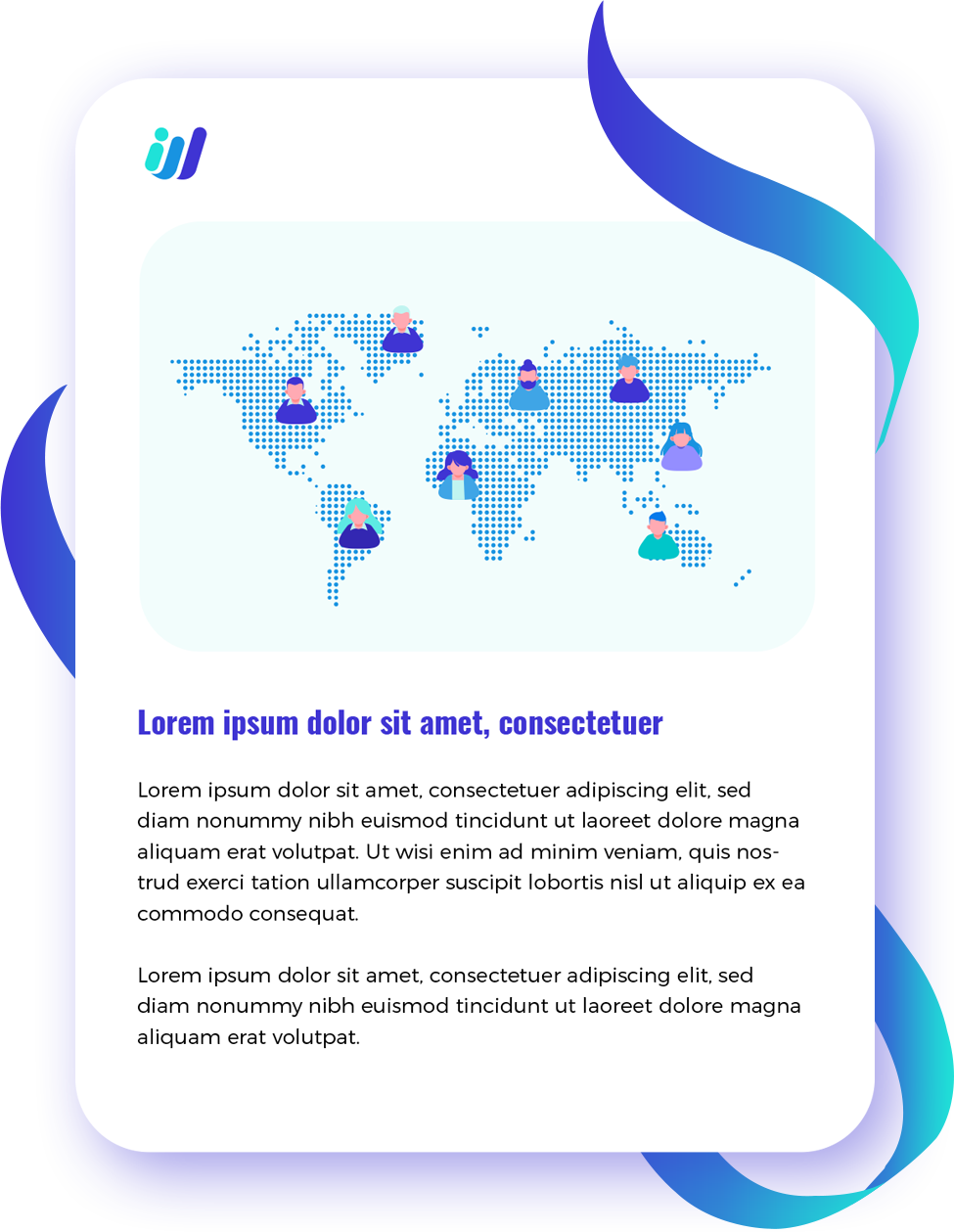The tech talent race has gone global — and it’s only getting faster. Even with occasional slowdowns in the tech sector, demand for skilled engineers keeps climbing. The U.S. tech workforce alone is expected to grow twice as fast as the overall labor force over the next decade. That’s not just a hiring challenge; it’s a wake-up call.
If you’re only looking for talent within your ZIP code, you’re competing for the same limited pool of people as everyone else. The smartest companies are looking beyond borders — not because it’s trendy, but because it’s a strategic advantage.
A truly global technical team doesn’t just check diversity boxes. It combines inherent diversity (things like gender, race, and identity) with acquired diversity — the insights people gain from unique life experiences, career paths, and global exposure. Add geographic diversity to the mix, and you get teams that see problems — and opportunities — from angles no single-market company ever could.
In today’s world, building globally isn’t a “nice-to-have.” It’s a necessity for attracting, retaining, and empowering the best talent on the planet. Here’s why.
1. Access to TalentYou’ll Never Find Locally
When you go global, your hiring pool expands from thousands to millions. That shift alone changes everything. Instead of competing with every other local company for the same ten engineers, you can find the right person, with the right skills, wherever they are.
Take Wellington, New Zealand: when it ran a global recruitment campaign for its startup sector, it drew 48,000 applications from 28 countries. That’s the power of thinking globally.
Global hiring isn’t about chasing low-cost labor — it’s about cognitive arbitrage: finding unique expertise that isn’t tied to a location or a degree. Some of the best engineers today don’t have formal diplomas, and companies like Microsoft and Apple have proven that skill beats pedigree every time.
Another advantage? The best candidates now actively research companies’ DEI practices before applying. Over half of women and nearly half of men say they check a company’s diversity record before accepting a job offer. If your company doesn’t show a commitment to inclusion, you’re cutting yourself off from top-tier talent.
2. Diversity Pays — Literally
Diversity isn’t just about doing the right thing. It’s about outperforming your competition.
According to McKinsey, companies with gender-diverse leadership teams are 25% more likely to outperform financially. For ethnic and cultural diversity, that number jumps to 36%.
The reason is simple: diversity fuels better decisions, which fuel better results. Teams that reflect multiple backgrounds, markets, and perspectives see more opportunities — and avoid more blind spots.
And the impact goes beyond profit margins. Research shows that diverse management teams generate 19% more revenue from innovation. That’s not coincidence — it’s cause and effect.
The caveat? You can’t just hire diverse people and call it a day. Inclusion is what turns diversity into performance. When people feel safe to speak up and know their ideas matter, innovation compounds. A small bump in employees’ sense of inclusion can even translate to higher attendance, engagement, and retention.
3. More Innovation, Less Groupthink
Innovation rarely happens in echo chambers. It comes from debate, collaboration, and the collision of different perspectives.
Homogenous teams often default to groupthink — agreeing too fast and overlooking flaws. Diverse teams challenge each other. They question assumptions, test alternatives, and ultimately build stronger solutions.
Picture a global dev team: a front-end engineer in Puerto Rico perfects image resolution, while a machine learning specialist in China designs an algorithm for visual recommendations. The result? A feature that’s not just technically sound, but globally relevant.
Inclusive organizations are six times more likely to be innovative and 75% more likely to turn ideas into real products. Diversity doesn’t just create ideas — it helps ship them.
And as AI and machine learning continue to shape industries, having multiple cultural lenses on a team helps prevent algorithmic bias before it starts. Diversity is no longer just about creativity; it’s also about building products that are fair, inclusive, and trustworthy.
4. A Built-In Advantage for Global Market Fit
If your customers are global, your team should be too.
A globally diverse technical team gives you real-time insight into different markets — not from research reports, but from people who actually live there. They understand local regulations, cultural nuances, and user behaviors you’d never catch otherwise.
That insight can make or break an international product launch. From UX choices to language translation, these details shape whether a product feels “made for me” or “made somewhere else.”
Global teams also act as an early warning system for bias and cultural blind spots — essential for companies building AI or data-driven products. A team that represents your user base is your best defense against unintentional bias in algorithms or design.
5. Faster Development with 24/7 Operations
One of the biggest hidden superpowers of a global team is time.
With people spread across time zones, you can run a Follow-the-Sun model — where work literally never stops. When your engineers in Europe sign off, your team in Asia picks up. Bugs get fixed overnight. Products move faster.
The trick is mastering asynchronous communication — the art of sharing context-rich updates without everyone needing to be online at the same time. Async communication means documenting decisions clearly, using shared tools effectively, and trusting your teammates to keep the momentum going.
Done right, this model not only speeds up development but also reduces burnout. Everyone works during their normal daytime hours, and no one has to pull midnight calls to stay “synced.”
6. Better, Faster Decisions
Data doesn’t lie: diverse teams make better business decisions 87% of the time — and when they execute those decisions, results improve by 60%.
Why? Because diversity introduces constructive friction. Different perspectives force teams to test their logic before committing.
Inclusive teams also decide faster. Studies show that diverse groups following inclusive processes make decisions twice as fast with half as many meetings. That’s an operational edge most companies would kill for.
Of course, this only works with strong, inclusive leadership. The best global leaders lean into cultural intelligence — understanding how communication styles differ across regions — and use those differences to strengthen collaboration, not stifle it.
7. Stronger Retention and a Magnet for Talent
In tech, retention is the new recruitment.
When top engineers know they can work from anywhere, they also know they can leave anytime. That’s why culture — especially inclusion — matters more than ever.
Companies with visible, credible DEI commitments consistently earn higher employee satisfaction ratings. That’s not just feel-good data; it’s a business safeguard. Replacing a specialized engineer costs time, money, and momentum.
A diverse, inclusive team doesn’t just attract great talent — it keeps them. People stay where they feel seen, respected, and able to grow.
And from a branding standpoint, companies known for global inclusion instantly stand out in the market. In the “Great Attraction” era, being known as an inclusive global employer is one of the strongest recruiting advantages you can have.
Making It Work: The Role of Communication and Trust
Building a globally distributed team is powerful — but not effortless. Time zones, communication styles, and compliance laws can trip up even the best organizations.
The key is to build an async-first culture supported by clear documentation, transparent processes, and collaboration tools everyone actually uses.
For moments that do need real-time discussion — like big architectural decisions — consider nearshoring (hiring in adjacent time zones) to make overlap easier.
Finally, invest in trust. Without it, global teamwork falls apart fast. Teams have to rely on the work passed to them, not re-check it every morning. That requires extreme clarity, reliable systems, and leadership that models accountability across borders.
The Bottom Line: Global Diversity Isn’t a Perk — It’s a Power Move
Building a globally diverse technical team isn’t just about ethics or optics — it’s about advantage.
It’s how you find the world’s best engineers.
It’s how you innovate faster.
It’s how you outperform competitors who still think locally.
The companies that will dominate the next decade are already operating this way — seamlessly across borders, cultures, and time zones, powered by people who bring different skills and stories to the table.
In short: global diversity isn’t just good business. It is the business.
Ready to dive deeper into how Third Wave Outsourcing can future proof your business strategy? Download our comprehensive ebook to explore the nuances of finding the best talent, building powerful partnerships, and leveraging this global shift for sustained success. The future of outsourcing is here. Are you prepared to embrace it?


